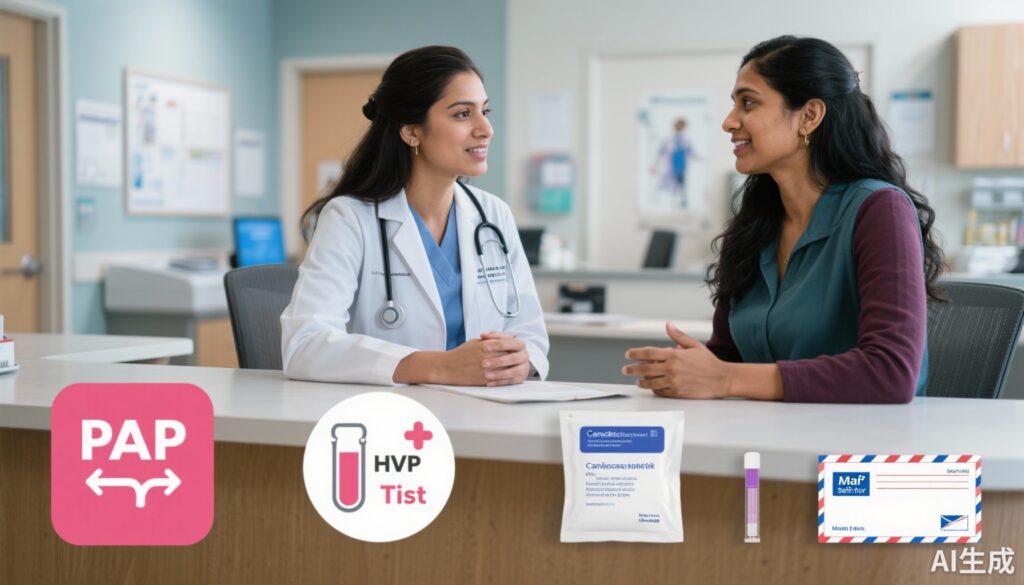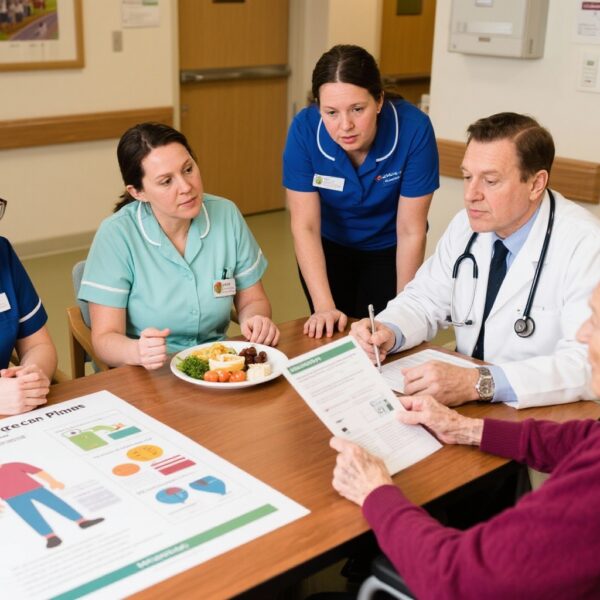Introduction and Context
Cervical cancer screening has changed substantially in recent years as human papillomavirus (HPV) testing, vaccination programs and new triage strategies have altered the balance of benefits and harms. To inform an update of the Canadian Task Force on Preventive Health Care recommendations, Pillay and colleagues performed a comprehensive series of systematic reviews (published October 2025) that examined the evidence on screening effectiveness, comparative effectiveness of screening strategies and intervals, comparative test accuracy, patient preferences, interventions to increase uptake among under- or never-screened populations, and pregnancy-related harms from management of cervical intraepithelial neoplasia (CIN).
This article summarizes the core findings from that review, highlights implications for guideline updates and practice, and outlines where evidence remains uncertain and where expert judgment will matter most.
New Guideline Highlights
Key messages from the 2025 systematic evidence synthesis (Pillay et al.) that should drive guideline thinking:
– Cytology-based screening (Pap tests) — the traditional approach used for decades — is probably effective at reducing invasive cervical cancer (ICC) and cervical-cancer mortality at least into the 60s for people with a cervix, particularly among those who were not adequately screened in their 50s (moderate-certainty evidence).
– Evidence for screening benefits in people younger than about 35 years (e.g., ages 20–34) is very uncertain when relying on the available observational cytology data.
– HPV-based primary screening with triage by cytology detects more high-grade precursors (CIN 2/3) in initial rounds and therefore may reduce later incidence of CIN 3+ and ICC, but it also leads to substantially more referrals to colposcopy and false positives in some age groups (particularly 25–29-year-olds).
– Self-sampling HPV kits substantially improve screening participation among under- or never-screened people and — when followed by appropriate triage — are unlikely to miss an important number of high-grade lesions.
– Several interventions reliably increase participation among underscreened groups: mailed invitations, personal outreach, composite interventions, and distribution (universal or opt-in) of self-sampling HPV kits.
– Evidence about adverse pregnancy outcomes following conservative management of CIN 2/3 is very low certainty, and modern, more conservative treatment practices (especially for younger people) reduce the applicability of older harms estimates.
These findings frame potential shifts in screening programs: a continued role for cytology where implemented, cautious adoption of primary HPV strategies with thoughtful triage/recall algorithms, and systematic deployment of self-sampling to reach populations who do not attend clinic-based screening.
Updated Recommendations and Key Changes (Implications for the Task Force Update)
The systematic review is an evidence base rather than a finished guideline, but it points to several proposals the Task Force is likely to consider. Below are the major evidence-driven changes or policy levers under consideration, compared with older cytology-only paradigms.
– Start age: Evidence remains uncertain about benefit in people under 25–35 years. Task Force deliberations will likely continue to favor deferring routine screening until mid-20s in many settings, prioritizing shared decision-making for younger sexually active individuals.
– Stop age and prior screening history: Screening through the 60s probably reduces ICC and mortality for people who were inadequately screened in their 50s. For those with adequate negative screening histories in their 50s, the marginal benefits of continuing into the 70s are less certain — implying that stopping decisions should incorporate individual screening history.
– Interval: The comparative effectiveness of cytology every 3 years versus every 5 years is very uncertain. However, HPV-primary strategies with longer intervals (e.g., every 4–5 years) are being considered because of higher negative predictive value.
– Primary screening test: Primary hrHPV testing with cytology triage detects more precursors earlier than cytology alone but increases colposcopy referrals and false positives in younger age bands. An age-stratified approach (favor hrHPV primary for ages 30–65, with caution in 25–29) is a likely policy consideration.
– Triage and partial genotyping: Evidence is mixed for additions such as partial genotyping (HPV 16/18) or recall strategies; careful selection of triage rules that minimize false positives without compromising detection will be crucial.
– Self-sampling: Universal mail-out or opt-in of hrHPV self-sampling kits reliably increases uptake in underscreened populations and should be a recommended outreach tool where feasible, paired with effective follow-up systems for positive results.
– Implementation/context: Choices between cytology and hrHPV strategies will depend on resources, laboratory capacity, population vaccination coverage, and acceptability.
Topic-by-Topic Recommendations and Evidence
A practical topic-by-topic breakdown of findings and how they translate into guideline points.
Ages to start and stop screening
– Evidence base: Observational studies on cytology.
– Findings: Very low certainty for benefit under age 35. Moderate certainty that cytology screening in the 60–69 age group reduces ICC and cervical-cancer mortality among those with inadequate screening histories in their 50s. Stop-age recommendations should therefore be individualized based on prior screening adequacy.
Screening intervals
– Evidence base: Limited comparative data; many studies reflect single rounds of screening.
– Findings: Uncertain whether cytology every 3 years is superior to every 5 years. HPV-based screening may support longer intervals owing to higher negative predictive value, but optimal intervals depend on triage strategy and vaccination context.
Primary screening tests and comparative strategies
– Cytology vs hrHPV primary: One round of hrHPV with cytology triage can detect substantially more CIN 2/3 early than cytology alone. Across ages 25–59, hrHPV alone may make little-to-no difference in CIN 3+ incidence versus cytology, but hrHPV increases colposcopy referrals and false positives in 25–29-year-olds.
– hrHPV with cytology triage vs cytology with hrHPV triage: The former may reduce ICC incidence and often leads to greater early detection of precursors. The choice of recall phases and triage algorithms modifies harms, especially for younger groups.
– Partial genotyping: Adding partial genotyping (HPV 16/18) may modestly increase specificity and reduce false positives at the cost of a small loss in sensitivity. Pairing partial genotyping with cytology triage of non-16/18 positives shows higher sensitivity and specificity compared with cytology alone (moderate certainty for some comparisons).
Self- versus clinician-sampling
– Evidence shows self-sampling for hrHPV testing achieves similar specificity and a small loss of sensitivity (i.e., may miss a few CIN 2/3 cases) when compared with clinician-collected samples. For underscreened populations, self-sampling markedly increases participation.
Triage and recall
– Algorithms that minimize unnecessary colposcopies while preserving detection of CIN 3+ are preferred. The evidence suggests that adding cytology as triage reduces false positives (high certainty) compared with hrHPV testing alone.
Adverse pregnancy outcomes after CIN treatment
– Two existing systematic reviews found very low certainty evidence for associations between conservative treatment of CIN 2/3 and miscarriages, preterm birth, low birth weight, or cervical cerclage. Modern conservative management practices — especially deferring or using less-extensive excisions in those who desire fertility — limit the applicability of older harms data.
Patient values and preferences
– Studies measuring disutilities indicate invasive cervical cancer is at least twice as undesirable as CIN 2/3; false positives from cytology alone had little measured disutility. Informed individuals often consider benefits to outweigh harms, but want clear information to support decisions.
Interventions to increase uptake in underscreened groups
– Strong evidence (moderate to high certainty) that:
– Written contact (invitations/reminders) increases uptake (RR ~1.50).
– Personal contact and composite interventions also increase uptake.
– Universal mail-out of hrHPV self-sampling kits has one of the largest effects (RR ~2.56), with opt-in self-sampling also beneficial.
Expert Commentary and Insights
Evidence synthesis panels participating in the Task Force update highlighted several consistent themes:
– No one-size-fits-all: The balance of benefits and harms shifts with age, prior screening history, HPV-vaccination coverage and program capacity. Policymakers must consider these contextual elements when choosing primary test, triage rules and screening intervals.
– HPV testing is more sensitive and allows longer intervals, but brings a short-term increase in colposcopy and false positives especially among younger cohorts; careful triage and age thresholds can blunt harms.
– Self-sampling is a major opportunity to reduce disparities in screening coverage. High-quality follow-up systems to manage positive self-tests are essential to avoid loss to follow-up.
– Screening guidelines must be forward-looking: as vaccinated birth cohorts age into screening, baseline risks will decrease and recommendations may need recalibration (e.g., longer intervals or different start ages).
– Evidence gaps remain: long-term impacts on ICC mortality from many comparative strategies are uncertain (low to very low certainty), and most trials reflect early-round detection rather than cumulative program outcomes.
Practical Implications for Clinicians and Health Systems
– For clinicians: continue age-appropriate cytology in jurisdictions where that remains standard, but be prepared to counsel patients about the pros and cons of HPV-primary screening and to support shared decision-making, especially for younger people and those with prior screening histories.
– For program managers: consider pilot implementation of hrHPV primary screening with built-in cytology triage and clear recall algorithms, and prioritize mailing or offering self-sampling options for non-responders to reduce inequities.
– For laboratory services: scale-up of hrHPV testing capacity, data systems for recalls and linkage of self-sampling results to care pathways are essential prerequisites for safe roll-out.
– For patients: informed conversations should cover the likelihood of false positives/colposcopy with HPV testing, the possible need for more frequent follow-up if positive, and the strong evidence that screening prevents cancer when people participate in recommended programs.
Patient vignette
Maya is a 28-year-old woman who has had intermittent screening. She is offered two options: routine cytology in clinic or an hrHPV self-sampling kit mailed to her home. After discussing the higher sensitivity but greater colposcopy risk of hrHPV testing in younger women, and her preference to avoid clinic visits, Maya chooses self-sampling. A positive test prompts timely cytology triage and, if indicated, referral — illustrating how self-sampling tied to clear follow-up can improve participation and maintain safety.
Remaining Controversies and Research Needs
– Optimal age thresholds for switching from cytology to hrHPV primary testing remain debated, especially for 25–29-year-olds.
– Most comparative studies report single-round detection; longer-term randomized comparisons measuring ICC incidence and mortality across rounds are needed.
– The impact of high HPV vaccination coverage on optimal screening algorithms and intervals requires modeling and empirical study as vaccinated cohorts mature.
– Implementation research on integrating self-sampling with robust triage and follow-up systems will be key to realize benefits without increasing harms.
References
1. Pillay J, Gates A, Guitard S, Zakher B, Sim S, Vandermeer B, Hartling L. Screening for the prevention and early detection of cervical cancer: systematic reviews to inform an update to recommendations by the Canadian Task Force on Preventive Health Care. Syst Rev. 2025 Oct 28;14(1):206. doi: 10.1186/s13643-025-02866-4. PMID: 41152983; PMCID: PMC12560550.
2. US Preventive Services Task Force. Screening for cervical cancer: US Preventive Services Task Force recommendation statement. JAMA. 2018;320(7):674–686. doi:10.1001/jama.2018.10897.
3. World Health Organization. Global strategy to accelerate the elimination of cervical cancer as a public health problem. Geneva: WHO; 2020. https://www.who.int/initiatives/cervical-cancer-elimination-initiative
4. American Society for Colposcopy and Cervical Pathology (ASCCP). 2019 Risk-Based Management Consensus Guidelines for abnormal cervical cancer screening tests and cancer precursors. J Low Genit Tract Dis. 2020;24(2):102–131.
5. Arbyn M, Smith SB, Temin S, Sultana F, Castle P. Detecting cervical precancer and reaching under-screened women by using HPV testing on self-samples: updated meta-analyses and implications for screening. Vaccine. 2018;36(32 Pt A):4856–4866.
6. Canadian Task Force on Preventive Health Care. Recommendations for screening for cervical cancer. CMAJ. 2013;185(1):35–45.
(higher-level program and implementation references and the primary systematic review provide the evidence base for the Task Force’s ongoing update)



